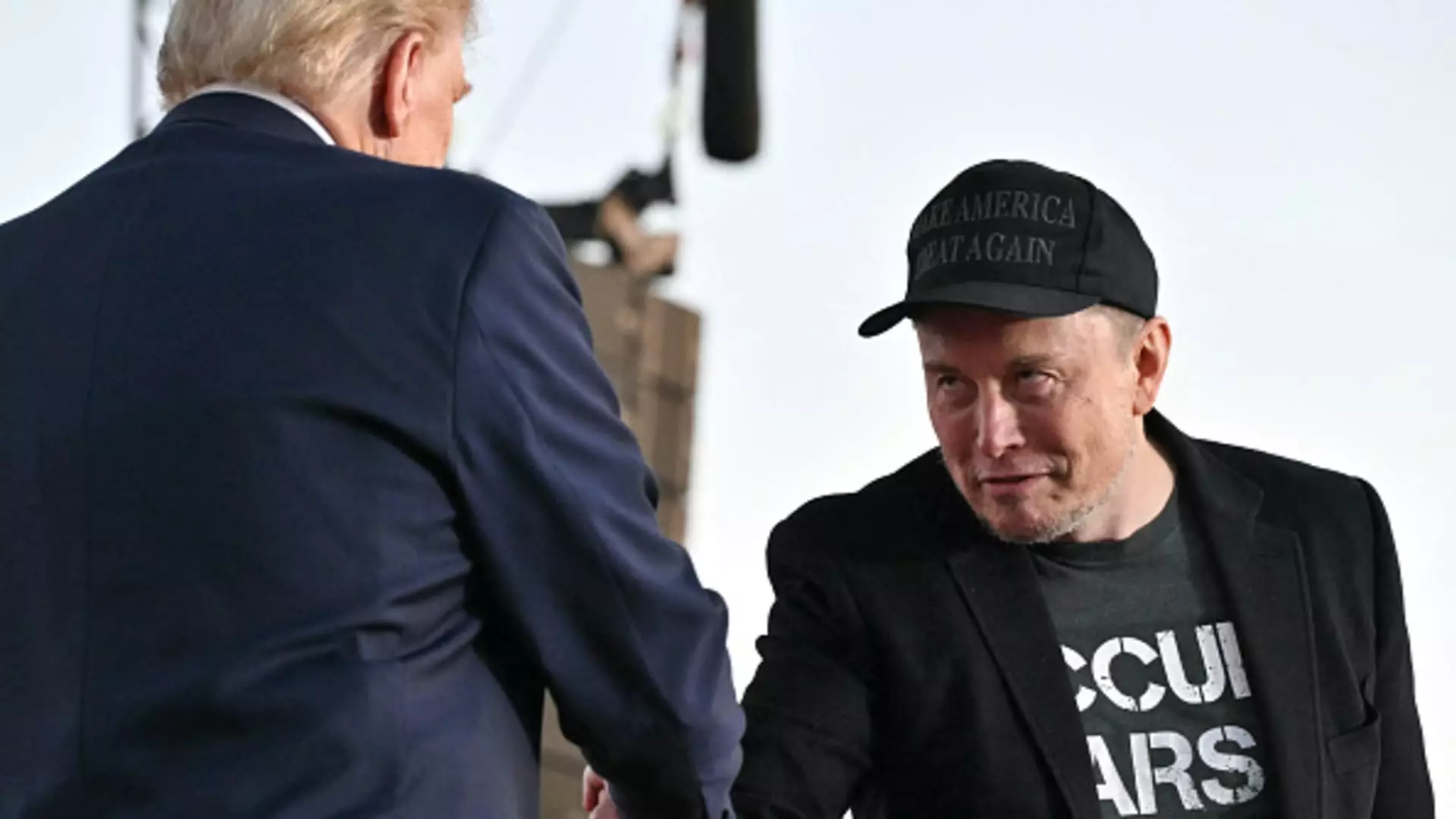As the automotive industry progresses into the realm of autonomy, the involvement of government frameworks to govern self-driving technology becomes increasingly critical. The recent surge in Tesla’s stock, triggered by reports of President-elect Donald Trump’s transition team prioritizing a federal regulatory structure for self-driving vehicles, highlights the intersection of politics and technology. This article delves into the implications of such regulatory frameworks, the challenges that Tesla has faced in realizing its vision, and the broader consequences for the self-driving vehicle market.
The potential for a federal framework regulating autonomous vehicles is more than mere bureaucratic oversight; it represents a crucial step towards legitimizing and mainstreaming self-driving technologies. Regulations can establish safety standards, help manufacturers navigate legal landscapes, and build public trust in these new systems. For Tesla, which has been vocal about its ambitions for fully autonomous driving, a federal framework could serve as a double-edged sword. On one hand, it would provide clear guidelines that could facilitate the deployment of their anticipated “robotaxi” services. On the other hand, regulatory hurdles could delay the very advancements Tesla seeks to achieve, particularly if the regulations imposed are stringent.
While some industry experts argue that oversight is essential for consumer safety, opponents fear that excessive regulations could stifle innovation. Government agencies like the National Highway Traffic Safety Administration (NHTSA) have a responsibility to ensure the safety of new technologies. However, the challenge lies in balancing regulation with the pace of innovation. A too-conservative approach could slow down advancements, while a laissez-faire stance might expose consumers to unnecessary risks.
Despite its bold claims and considerable investments in self-driving technology, Tesla has faced significant challenges in reaching its goal of fully autonomous vehicles. CEO Elon Musk unveiled his vision for a fleet of robotaxis, boasting vehicles without steering wheels or pedals. However, Tesla has not yet delivered a fully self-driving car capable of operating without human oversight, raising questions about the company’s roadmap and feasibility. There is a palpable sense of urgency surrounding Tesla’s efforts, especially as competitors like Waymo have already launched successful self-driving services.
The announcement of the “Cybercab” and plans for “Robovan” vehicles illustrates Musk’s commitment to innovation. However, behind the excitement lies the reality of navigating regulatory environments and engineering challenges in making autonomous driving a reliable and safe reality. The distinction between “supervised” and “unsupervised” Full Self-Driving (FSD) technology is a critical one. While Tesla has begun touting its future capabilities, the current version requires constant human vigilance, which could mitigate consumer enthusiasm for these vehicles.
The collaboration between tech leaders like Musk and political figures can significantly shape the regulatory landscape that governs industries. By prioritizing transportation policy, Trump’s administration could facilitate more favorable conditions for Tesla. Musk’s connection to Trump, acknowledged through political support during election campaigns, illustrates how industry leaders can influence policy discussions affecting their sectors.
The potential appointment of policy leaders from the private sector, such as former Uber executive Emil Michael, could bring insight into the rapidly evolving virtual driving landscape. Still, reliance on individuals from within the industry raises concerns about potential conflicts of interest. Establishing a balanced approach for policymakers—one that considers both the technological advancements and public safety—is essential for effective governance.
The anticipated regulatory framework for self-driving cars may catalyze the broader adoption of autonomous technology. Tesla stands at the forefront of this transition, facing fierce competition and scrutiny. With its ambitious plans for fully autonomous vehicles, the company not only seeks to redefine transportation but must also navigate the intricacies of legal and ethical implications associated with self-driving technologies.
Musk’s vision of a driverless future may yet be realized, but it will require a concerted effort from both the private sector and government entities to align goals, create effective regulations, and foster innovation. In doing so, they might pave the way for a transformed transportation landscape—one that prioritizes safety while unleashing the potential of self-driving technology. As the automotive industry stands on the brink of a revolution, the question isn’t just whether Tesla can achieve its goals, but how involving policymaking will shape the future of automated driving.


Leave a Reply